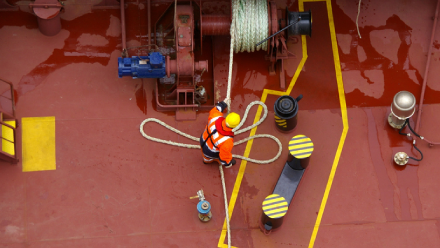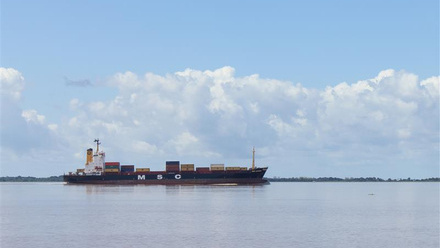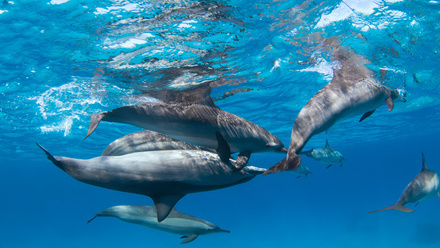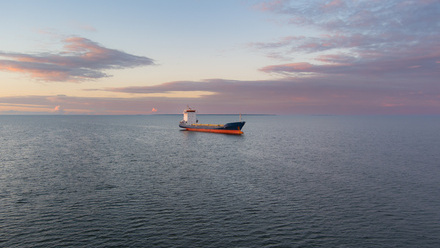Why concealing shipping accident details is becoming more difficult
Lloyd’s List Intelligence (LLI) is focused on collecting and processing data from shipping incidents, which can be used for valuable insights and stopping shipowners staying silent.
LLI might not be the first to hear about a ship accident, and certainly does not generate casualty reports – that is the job of agencies such as the Marine Accident Investigation Branch (MAIB) and others – but it is these reports that contribute data points to the bigger-picture outlook in which LLI specialises. If an individual casualty has lessons for the shipowner, then many of them, or even a trend, proffers even greater predictive power, explains Sabrina Edwards, Maritime Editorial Data Manager, LLI (pictured below).
“As a broader data and analytics company, we would look at the history of who are [the] managers of that ship, their performance when it comes to incident management, the types of incidents [that] have happened previously,” Edwards says. “It could be port state control incidents as well, the history when it comes to a ship, the age of that vessel, its behavioural characteristics.
“Having all that information and context, we can start to point out those vessels which might be at risk of that type of behaviour. Single ship-owning entities with a crew from a certain place, dealing in certain areas with a low level of regulatory scrutiny, maybe under a flag state where there is low enforcement capability. These are typically the red flags that give you an indication. Having more transparency might prevent some of that.”
The truth will out
Shipowners have come under criticism for keeping silent about cyberattacks to prevent reputational damage, a problem which some experts have suggested is responsible for downplaying the risk to shipping in general. But the practice did not start with cyber criminality. In reality, there are many more incidents that go unreported, and part of LLI’s job is getting around this, Edwards says.
“I think being in the information age helps. With the AIS (automatic identification system) data that we have, and the machine learning we're able to apply to that AIS data, we're able to identify when a vessel goes dead, or when something happens much faster.
“Our team doesn’t just check incident websites, or local news. We are also checking social media, checking every possible avenue for information. The details we're able to get are better, especially with our renewed partnership with Lloyd's Agency Network, [and] our global coverage is particularly good.
“Mandatory reporting on total losses is now coming into play. But this doesn’t mean we will necessarily hear more of these container losses happening at sea. There might still be a significant level of under-reporting in that space. We know that the mandatory casualty reports for serious incidents are not necessarily being filed, and that has been recognised by the International Maritime Organization (IMO) as well.
“There are many different industry groups with various parts to play, both when it comes to flag states and their reporting requirements, but also the P&I (protection and indemnity) clubs, who are calculating the risks and really thinking about the potential disaster scenarios,” states Edwards.

Predicting future incidents
Such a large amount of shipping regulation is drawn up retroactively, rather than looking ahead to envision future problems, that it can give the impression the sector is sometimes slow on the uptake. But the sector is just so massive, Edwards explains, that there are limits to experts’ prescient powers. “Even the casualties we track cover such a wide range of incident types, it's such a fast moving and varied industry that being preventive or proactive is incredibly difficult given just all the things that can and do go wrong.”
From time to time however, an incident occurs that lies well beyond most powers of prediction and sets new precedents for the future. MV Dali is one example of an accident making a huge splash across the world. LLI isn’t always lucky enough to have shipping incidents on film, but the MVDali case stood out as a moment where internal shipping data and external coverage came together.
This Internet Age has opened new data collection points for companies such as LLI. “You'd be amazed to find when something happens, an incident that maybe the [crew] wouldn't even want their owners to know about, [that] a lot of that ends up on social media,” says Sebastian Villyn, LLI Head of Content Operations.
In general, it seems to be becoming harder to hide unflattering information from the public, which is likely a positive development for ship safety. “I think that the role of ship spotters is hugely important,” says Villyn. “But [there is] also a lot of self-reporting by crew. It's an avenue of sharing information before it's been approved by the company’s public relations (PR) [department].
“A number of our customers interested in casualty data are PR companies representing the owners. They would approach us and ask, ‘This isn't a public incident, how did you come to know about it?’ We work very closely with lawyers and agents to have the most verified reports. We're not looking to be breaking news, but we want to cover the [full] breadth of the incidents.”
Tell us what you think about this article by joining the discussion on IMarEST Connect.
Main image: Japanese ship Wakashio wrecked off the coast of Mauritius; credit Shutterstock.
Inline image: Sabrina Edwards, Maritime Editorial Data Manager, Lloyd’s List Intelligence.






